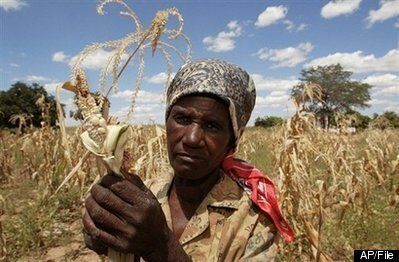
Reprinted with permission from The Star, Kenya and allAfrica.com
I'm awake at dawn as I was every day during my life in Loodariak, a Maasai community in the Great Rift Valley, 60 kilometers southeast of Nairobi, Kenya. I have never felt more connected to my environment as I did when I was there. I could stand in one spot and watch the sunrise, then just turn 180 degrees in the same spot to watch the sunset. Nothing obstructed my view.
Hence my great surprise to learn of Sir Richard Branson's gross misrepresentation, on his website, of the Maasai in his March 30 blog post, 'Protecting the Great Migration -- Mahali Mzuri in Kenya.'
I commend Jesse Masai and Paul Tobiko for challenging it in their article, 'Sir Richard Wrong About the Maasai' (The Star, April 2nd, 2012). I would like to add my concerned voice to theirs, based on my life and learning in Loodariak.
Branson states: "The Great Migration... was in danger of being destroyed because the migration passages were being taken over by cattle farming. People were putting fences up and these wonderful creatures were losing their habitat."
He shockingly suggests that Maasai "cattle farming" is responsible for "destroying" the habitat of wildebeest. He not only misrepresents the Maasai's symbiosis with their environment, but completely disregards the grave historical injustices against them, that have pushed them off their land and forced them to dramatically change their lives and livelihood. He disregards the fact that the Maasai in Kenya were evicted from their land by the British colonial government in 1913 and have been embroiled in battles to reclaim their land from the national government for many, many years since.
The Maasai are one of the indigenous peoples of the region. Historically they harmoniously shared the habitat of the wildebeest, but they have been forced off their land, to create game reserves. In a report two years ago, Cultural Survival, stressed that the Maasai "face greater threats to their way of life now, than at any other time in the recent past." They present a complete contrast to the misrepresentation communicated by Branson: "With the creation of game parks, private ranches and commercial wheat estates, Maasai herders, in particular, are fenced off and evicted from lands that were traditionally and legally theirs."
During my time in Loodariak, I was a member of the Kenya Pastoralist Forum, a group of pastoralists and those working with them across the country. I attended one meeting focused on the threats to pastoralists living in harmony with wildlife.
Despite their centuries of experience doing so, the voices of pastoralists are often excluded from decision-making affecting their lives. The issues may be complex and challenging to resolve, but we only stand to gain from including the voices of those with great wisdom gained from great experience. They stand to lose less by having a role in governing their own lives.
The Maasai have already lost so much. Historically they are nomadic pastoralists, who seasonally moved great distances with their livestock in search of green pasture. Forced to give up their nomadic lifestyle by government policies prohibiting their communal land ownership tradition, most are now semi-nomadic, with home bases where women and young children stay while the majority of the community moves with their livestock. Such movement is made necessary because the British forced them onto the worst drought-prone land in the country.
I lived in Loodariak during one of the worst droughts of the recent past. My heart broke seeing the ghost town the community became with women and young children struggling to survive on maize meal and milk, while the majority of the community travelled miles with their livestock struggling for their survival. Yet they still insisted on sharing what little food they had with me.
The Maasai have lived in harmony with their environments for millennia. Their lives and livelihoods depended on it. Much of the rest of the world's population could learn a great deal from them. My Loodariak community taught me more than any community I have ever lived in. They lived without electricity, phones, indoor plumbing and cars. Women built their families' homes with local resources and fetched water from central taps piped in from natural springs in the surrounding walls of the Great Rift Valley. Community members raised their own livestock that provided milk and meat for their diets as well as income for their other expenses. They created almost no waste. They lived with wildlife roaming freely around them. Every day I passed herds of giraffe, zebra, ostriches and gazelles as I walked from homestead to homestead meeting with community members. Every night I heard lions, leopards, hyenas and other night wildlife I couldn't always identify.
One of the young boys I tutored wrote a story once in which he claimed, "The cows told me that a lion was coming." I spoke to him about it, to ensure he had translated his thoughts accurately. He assured me he had. He lived so closely with his family's livestock that he communicated with them. And they warned him of an approaching lion.
Copyright © 2012 The Star. All rights reserved. Distributed by AllAfrica Global Media (allAfrica.com). To contact the copyright holder directly for corrections -- or for permission to republish or make other authorized use of this material, click here.
AllAfrica aggregates and indexes content from over 130 African news organizations, plus more than 200 other sources, who are responsible for their own reporting and views. Articles and commentaries that identify allAfrica.com as the publisher are produced or commissioned by AllAfrica.